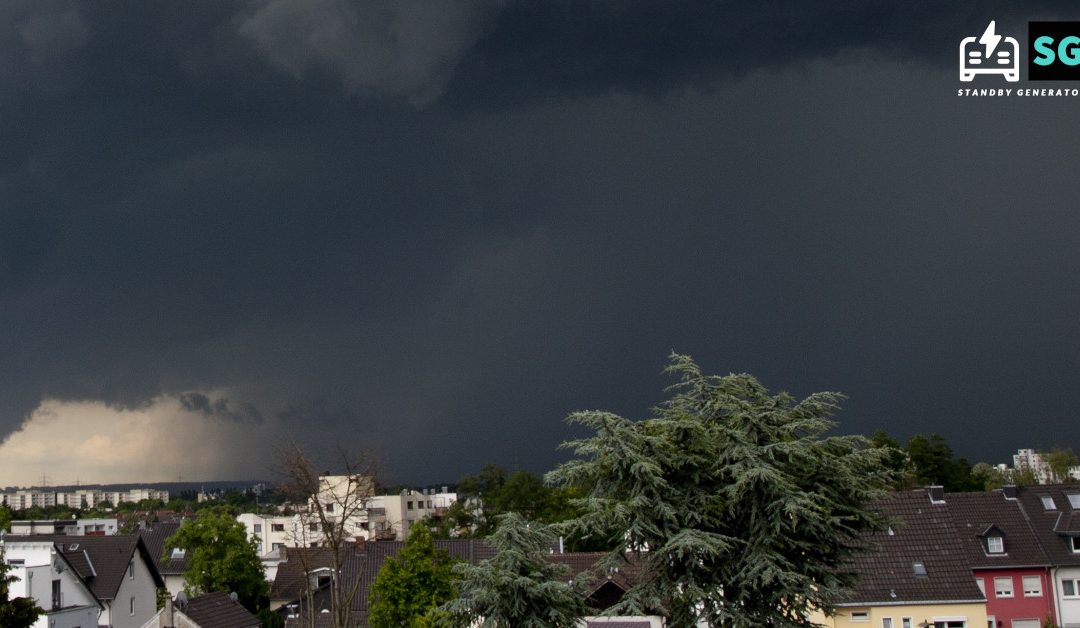When the outer bands of the hurricane approach, your plan should already be in place complete with a backup power plan like a hurricane generator for home.
Hurricane Generator Preparedness
In case you didn’t know, the Atlantic Hurricane Season will start on June 1 and run through November 30. Already this year, we had a sub-tropical cyclone form in January. It wasn’t a strong storm and didn’t last long enough to pose a threat to anyone along the Northeast Coast. However, it shows that cyclones can form in any month of the year. Just one more reason to prepare and be #HurricaneStrong.
Hurricanes bring incredibly strong winds, storm surge, torrential rain, flooding, and tornadoes. It’s the combination of torrential rain and wind that causes most of the damage to the power distribution grid. Hurricane Ida brought down all the transmission lines feeding the New Orleans area. It took over a month before electric utility restoration efforts had the power back on for everyone. Following Hurricane Sandy, many utility customers waited over 5 weeks for the power to come back on.
Everyone that lives in a state bordering the East or Gulf coast should have a Hurricane Preparedness Plan. If you don’t, now is the time to get started, before the hurricane season brings the first storm.
Since 2011, FEMA has recommended a generator for backup power following a hurricane.
Include a backup power option like a hurricane generator as part of your Hurricane Preparedness plan. (You have a plan, right?)
Besides everything else in your hurricane kit, you need a backup power option. Even if you never use it for anything but charging a cell phone. Generators are among the first items on the shelves to disappear from home centers, hardware stores, and outdoor power equipment suppliers.
Fortunately, the world of online shopping brings us to places like Norwall PowerSystems who specialize in backup generators for almost any purpose. They have portable generators and standby generators made specifically for home backup. If you order now, you could probably have a new generator in a week or two. Then you won’t be rushing around trying to buy a generator when you should be boarding up your house.
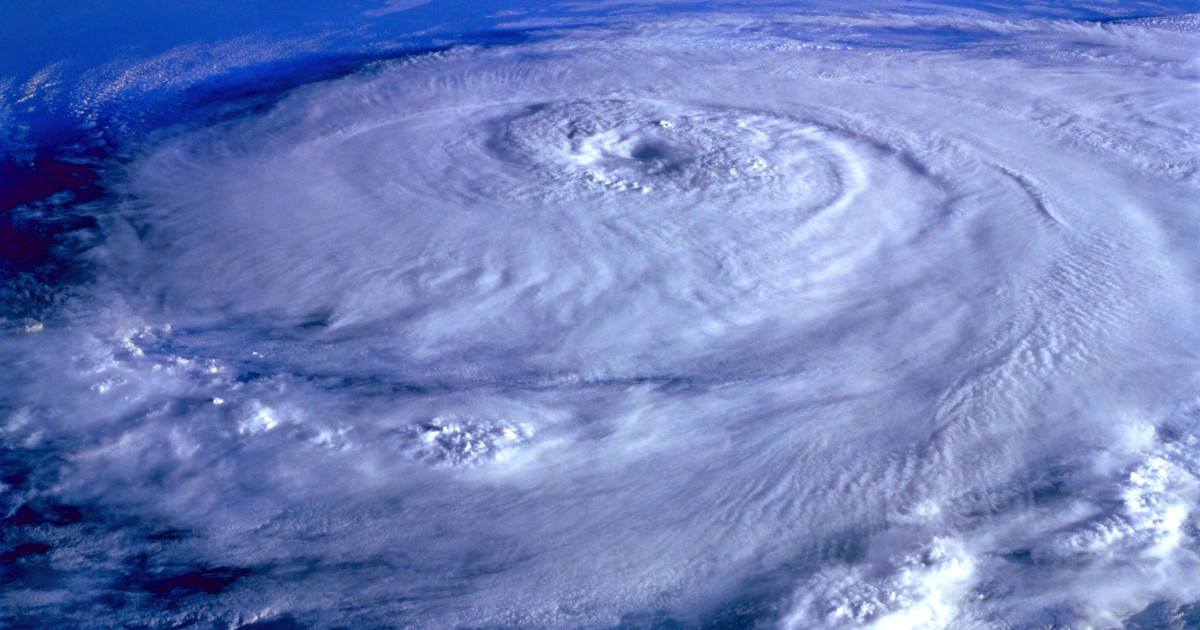
What Size Generator Do I Need for a Hurricane?
Buy a generator that powers the things you must have along with a few conveniences.
That sounds so easy, right?
In my house, the “must-have list” means a fridge, a couple of freezers, the air conditioning and furnace, sump pump, and a couple of CPAP machines. We also want a few lights, internet, television, microwave, and a couple of small appliances. The second part of the list falls into the convenience column.
For rough calculations, a fridge or freezer uses about 800 watts and needs another 800 to start. So right away, we have 3 x 800 = 2400 watts. The furnace is another 600, sump pump about 500, CPAP machines use an almost negligible amount of power, let’s call it 100 watts. The big user in our must-have list is the A/C. Our 1.5-Ton A/C needs 2500 running watts and a whopping 5000 to start.
We treat running watts and starting watts differently and I’ll show that in a minute for now, let’s add up our running watts.
Hurricane Generator Power Needs
|
Appliance |
Running Watts |
Starting Watts |
|
Fridge, Freezer 1, Freezer 2 |
2400 |
800 (we only count 1) |
|
Furnace |
600 |
1000 |
|
Sump Pump |
400 |
800 |
|
CPAP |
100 |
|
|
A/C |
2500 |
5000 |
|
Conveniences |
1500 |
|
|
Total Running Watts |
7500 |
6000 Starting Watts |
Adding up the running watts is easy. Find out how much power each appliance uses and add it to the total. Since we’re running several appliances with motors, we assume that two might try to start at the same time and that one of those is the A/C, so we choose the two with the highest starting watts and should be enough.
It looks like we need a generator that can supply at least 7500 running watts and an additional 6000 starting watts or a maximum total of 13500.
(Max Watts or Starting Watts accounts for the inrush of current when a motor starts. For a very brief moment, it’s like an open circuit that draws maximum power.)
Now we can head over to our online supplier and pick a generator that meets our power requirements. Keep in mind that you don’t want the generator to run flat out at max power all the time. A 50 to 75 percent load uses less fuel and the generator won’t burn out in a week.
A quick search yields three generators that would easily fit our requirements.
- A Champion 12000 Watt, 15000 Max Watts Gasoline Generator
- The DuroMax 10500 Watt, 13000 Max Watts Tri Fuel Generator
- A Westinghouse 12000 Watt 15000 Max Watts Dual Fuel Generator.
With a little research, I found out that a tri-fuel can run on any of three fuels (gasoline, propane, and natural gas), but not simultaneously. Natural gas sounds great because you don’t have to find, carry, and store gasoline or propane. Dual fuel models run on either propane or gasoline. The downside to natural gas and propane is power. These fuels lower the running watts available by a small amount. In this example case, it probably won’t matter much.
If you’re looking for a generator that runs on natural gas, you might be better off to consider a standby generator because natural gas isn’t portable.
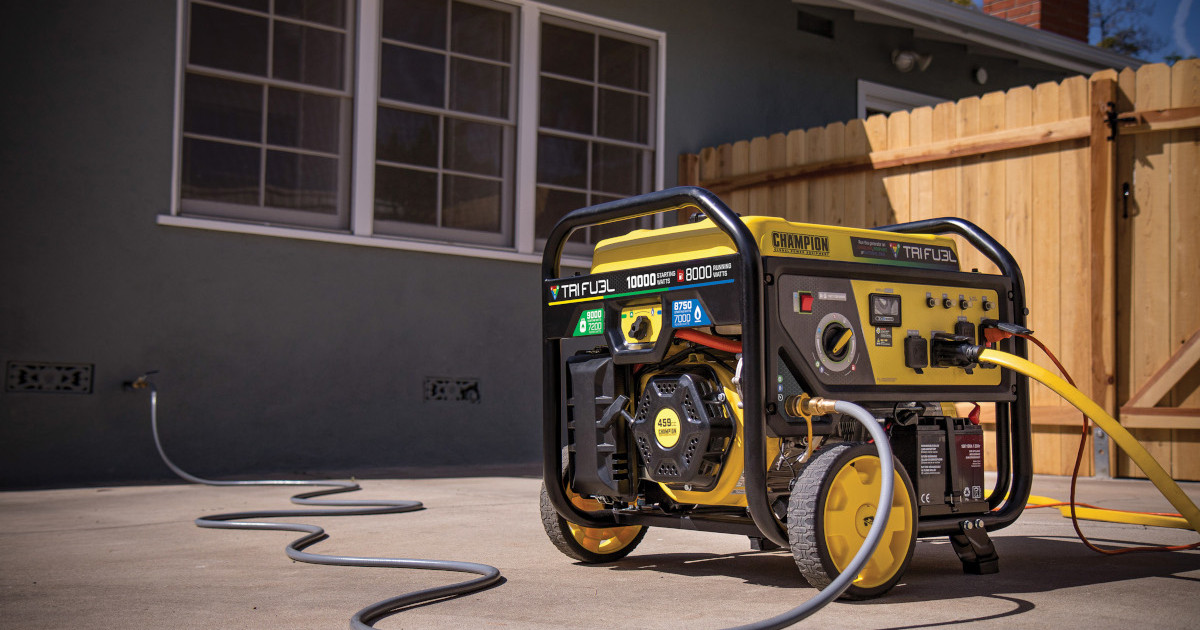
The Best Generator for Hurricane Prep
Power capacity makes all the difference when choosing a generator for hurricane Prep. We must check the rated watts for each fuel and determine if it meets our power needs or does not.
The DuroMax, for this application, starts off a little underpowered for our starting watts requirement. And, if we’re running on natural gas or propane, it won’t have enough starting watts to handle the two biggest loads starting at the same time. DuroMax has larger generators that would work, we’re just narrowing down choices from our first picks.
Westinghouse’s Dual Fuel 12000-watt generator can easily handle both our running watts and starting watts requirement. This generator puts out 50 amps at 240 volts and 100 amps at 120 volts—more than enough for our needs. That we can run it on either propane or gasoline is a big plus since we’re not reliant on just one fuel.
The Champion 12000 Watt Generator has all the power we need, but only uses gasoline. It’s still an option, we’re just making comparisons right now.
Without looking at the prices or exploring further, the best generator for hurricane prep in this case is the Westinghouse WGen12000DF. Before we make a purchase decision, we’re going to read all the specifications and have a look at the owner manual to help determine if this is the right generator for hurricane prep.
One thing that is important with any engine, but especially a small engine that relies on passive cooling, is maintenance. Some small engines require maintenance at ridiculously lower intervals.
The Westinghouse needs an oil change every 50 hours of running time. That’s slightly over two days. However, that is middle of the road for an oil change on a portable generator. It means that for a long outage, we need to keep a supply of oil on hand, plus spark plugs and air filters.
We can also see that the Westinghouse has quite a few outlets for extension cords and generator cords. By selecting a model with a 240-volt 50-amp outlet, we can run a single generator cord between the generator and an inlet box that connects directly to a transfer switch. If we need the generator, it’s only one cord, and it runs everything including our A/C and furnace.
If your power needs are lower, a 240-volt 30-amp outlet might serve just as well.
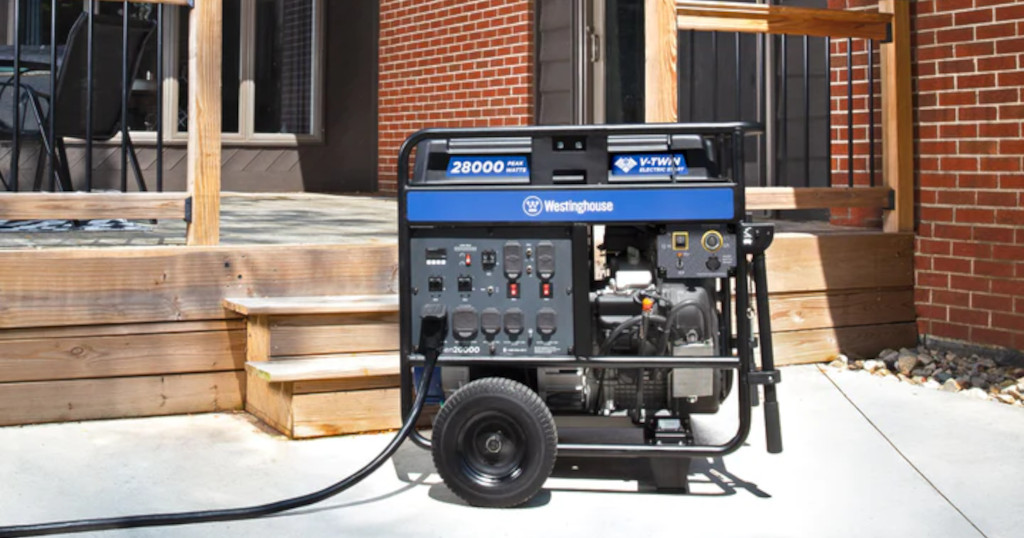
The Best Hurricane Generator
While we didn’t explore every option, we chose the best hurricane generator from a small field of models based on our needs and the ability of the generator to meet those needs.
Some other factors to consider are whether a portable is the best option for you. Standby generators cost a bit more, but they are fully automatic and you don’t have to do anything if the power goes out. The standby starts up and seconds later, it restores power to your home. They have a longer maintenance interval and usually the power quality is a little better. More about standby generators later in this article.
Portables are also heavy, even with wheels, and someone with limited mobility or strength might have trouble moving one from the garage to the driveway.
Fuel use is definitely a factor to consider when shopping. The larger portables we looked at can use a fair amount of fuel. The Westinghouse uses 23 gallons of gas or 19.1 gallons of propane per day at 50% load. If you plan for a 2 week outage, that’s almost 140 gallons of propane or 161 gallons of gasoline. That’s a lot of gasoline or propane to store.
Propane is easy. Suppliers sell or lease large tanks that hold 250, 500, 750, or 1000 gallons.
Gasoline is harder. It needs a stabilizer if you’re going to store it for more than a month. Some places prohibit storing more than a certain amount—25 gallons is a common limit. And if you can store more, how will you store it? The Westinghouse will need 32 five-gallons cans for 14 days.
Natural gas is even easier because there is no storage. Just hook up the generator and let it run from one oil change to the next—that’s another argument in favor of a standby.
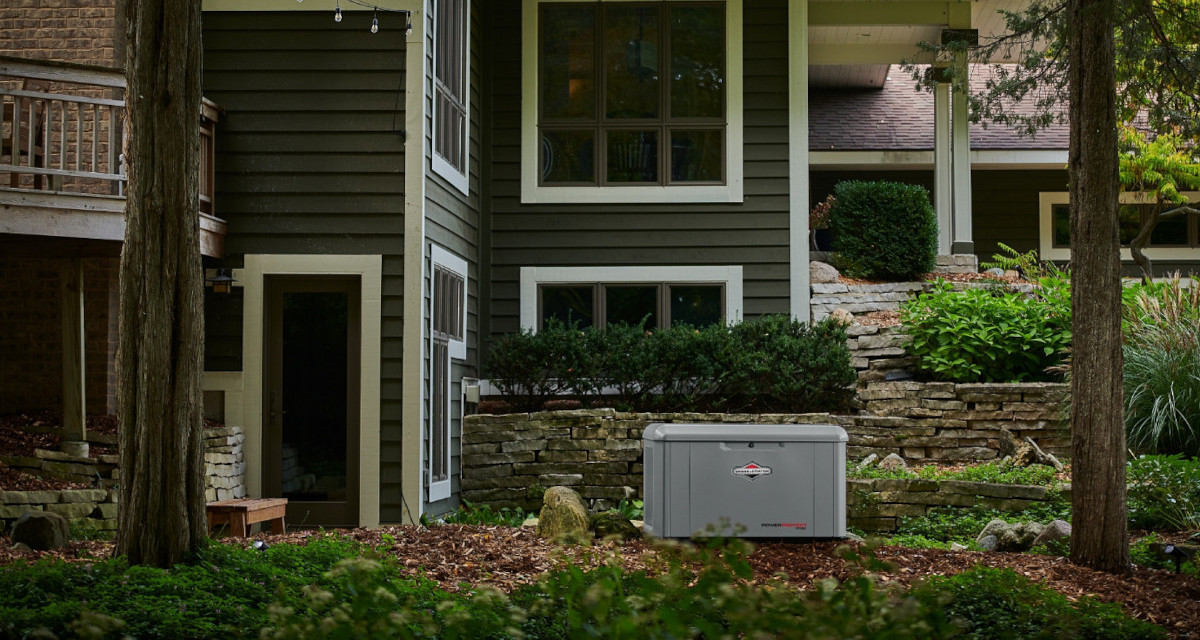
Next Level Hurricane Generator
We mentioned a standby generator above, but didn’t go into much detail. Let’s dig a little deeper.
A standby generator does exactly what it sounds like. It stands by, waiting for the power to go out. An automatic transfer switch controls power from two sources—the electric utility and the standby generator. During normal operation, the ATS selects the utility. If the power goes out, the generator recognizes the outage and starts. Seconds later, it signals the ATS to switch the home to generator power.
In less than a minute, the generator has restored power to the home’s main panel.
A standby generator installation is permanent. The electric utility lines and generator lines connect to the input terminals on the ATS, while output terminals connect to the main service panel. A whole house transfer switch also has a service disconnect, like the main breaker in a circuit breaker panel. Shut off the service disconnect and power ceases to flow from the utility. The generator’s main breaker does the same thing—it shuts off power to the transfer switch and the house.
At the lower end of the power range are models equal in size to a portable used for backup power. Air-cooled models cover the range from 7.5kW up to 26kW. Liquid cooled generators up to 150kW and more backup the largest homes and properties with multiple buildings or commercial applications.
Simply put, a correctly sized standby makes an excellent hurricane generator because it can power whatever you need it to power. You won’t have to choose between running the air conditioner or keeping the fridge cold.
If your house is small or you only want to power essentials, a standby generator from 7.5kW to 12kW will probably serve your needs. Pair it with a load center transfer switch that has its own breakers and the generator only powers the circuits you deemed as critical or essential, including your air conditioner.
With a whole house switch, the generator powers everything. The ATS can manage heavy loads like air conditioners, dryers, water heaters, and electric ranges. Some ATS models include management for air conditioner while other heavy loads require a model that allows the switch to turn power on or off to the appliance.
By managing power, a smaller hurricane generator powers an entire home. Everything has power, but perhaps not all at the same time. Some loads may start in sequence, others will wait until the highest priority loads turn off.
There are a lot of good reasons a standby is the best hurricane generator. They make backup power a reality for people who need power moments after it goes out. Portables are large, heavy machines that might be too difficult to move or impossible to set up during a hurricane or other violent storm. Safety is a very important reason. Made to run in any weather is another. No need to store fuel if you have natural gas or a large propane tank on your property provides two- or three-weeks’ worth of fuel—even longer if you manage the power.
The maintenance interval is typically longer than a portable, with some models allowing up to 200 hours between oil changes.
A standby generator for a hurricane outage is an investment. It costs more than a portable and if you move, you probably won’t take it with you. However, especially in areas prone to outages, like from a hurricane, a standby generator increases the value of your home. Return on investment varies with the real estate market in your area.
If you need an automatic generator that doesn’t require someone to hook up, start, and refuel, then a standby generator might be the best hurricane generator for you.

